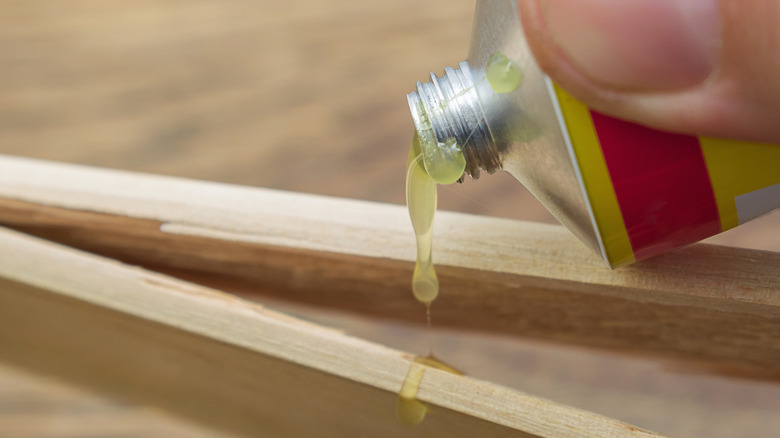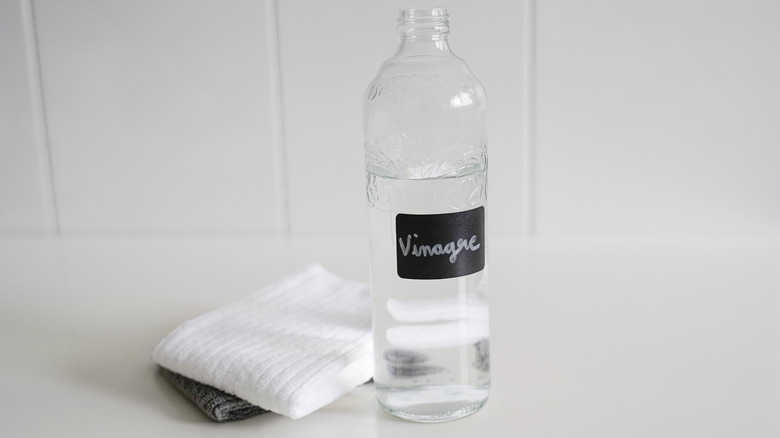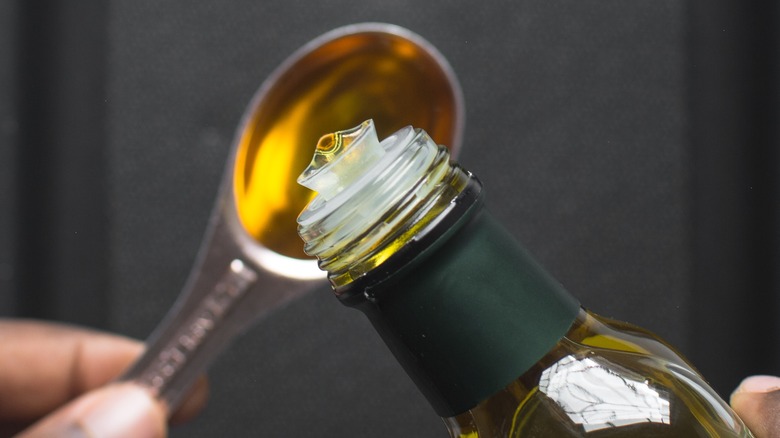The Best Way To Get Rid Of Dried Super Glue On Wood Surfaces
Super glue, also known as cyanoacrylate, offers exceptional bonding power, which makes it ideal for DIY home projects around the house and crafting. Yet when that same powerful stickiness ends up on a wooden surface, you might find yourself wishing it was weaker and easy to remove. Getting glue on furniture, floors, or anything else made of wood can be frustrating. You may try to scrape the glue off, only to come away dejected when it doesn't budge. Don't worry, as you can get rid of super glue and dried adhesive with the versatile cleaning tool vinegar.
There are many ways to use vinegar to keep your house clean, and it's no surprise that vinegar can easily take on a stubborn patch of super glue on wood. Typically, with a pH of 2 to 2.4, distilled white vinegar is a powerful acidic cleaner you can reach for any time you spill some super glue. The same acidic properties of vinegar that help break down grime in your kitchen can make your wooden surface glue-free once again. Here's how to use vinegar to treat and get rid of glue spots on wood.
How to use vinegar to get rid of super glue on wood
Using vinegar to remove dried-on super glue from wood is easy; however, be careful, as it can damage the finish. You can treat a cotton ball or a paper towel with a bit of distilled white vinegar mixed with equal parts water, then dab the mixture on the glue spot. Be careful not to oversaturate. Instead, use a light touch because you don't want too much water on the wood surface. Let the vinegar and water combination sit for five minutes, then peel away. You can also use a credit card or a thin, small razor to scrape away the glue very gently.
The acid in vinegar works to weaken and break down the glue adhesive so you can easily remove it. You may need to repeat the process a couple of times, depending on the size of the glue spot and the bond strength. If you don't have vinegar handy, there are a few other alternative approaches to cleaning off glue from a wooden surface.
Other alternatives for getting rid of super glue from wooden surfaces
You don't have any vinegar, but you still need to get rid of an unsightly glue patch after repairing wooden furniture trim. You can use another ingredient from the kitchen, olive or coconut oil, to remove the glue. Soak a paper towel with the oil, press it on the glue, and let it sit for 5 minutes. The oil will help break down the glue, so it's easier to remove simply by peeling it off. If you have one handy, you can also use a scraping tool to remove the glue gently.
It didn't work on that stubborn glue spot? In this case, you can try acetone or nail polish remover with acetone, both of which offer similar acidic properties to dissolve the super glue. If you have unfinished, untreated wood, the acetone approach is acceptable. However, acetone may damage finished and varnished wood. If you've never used acetone, test in an inconspicuous area to see how it affects the wood. Dip a cotton ball or Q-tip into the acetone or polish remover, then lightly touch the spot. Wait until the glue softens, then try to remove it with a cloth. As a last resort, you can use sandpaper or a sander to remove the glue, but with caution again if working with finished wood. Sand with a light touch, and opt for the highest-grit sandpaper you can find to avoid significant scratching on the wood.


